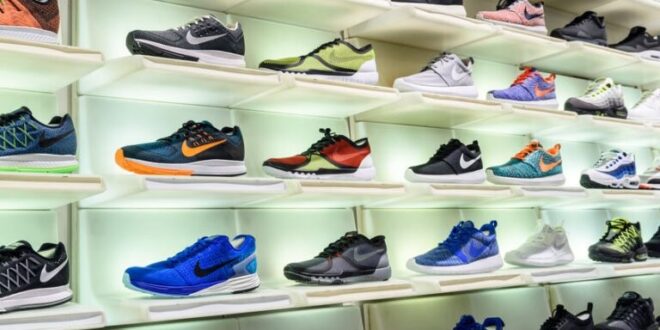A look at Red Points’ study on the topic of counterfeit footwear, including the reasons why people purchase it and consumer perceptions.
Main conclusions
The ability to distinguish between false and authentic product photographs was a concern for over one-third of poll respondents.
Over two-thirds of those who bought counterfeit shoes expressed some degree of happiness with the transaction, proving that not all fakes are disappointing.
Only a tiny percentage of purchasers specifically search for sneaker reps
If the price was good, over half of respondents stated they would purchase phony running shoes.
In the world of sporting footwear, fakes are rather common. In fact, according to current research, shoes are the counterfeit item that is created the most. Running shoes, trainers, and sneakers have all been common for years, and they are also easily and inexpensively replicated. And this isn’t going to change anytime soon given China’s rising passion for sports and athletic apparel. Because of this, counterfeiters find them appealing.
Red Points surveyed consumers who purchase sports footwear to learn more about their purchasing habits, experiences with fakes, and views about doing so. Red Points has previously researched online sportswear forgeries.
Customers are overconfident in their ability to spot fakes.
Sometimes it’s in our instinct to judge a talent with too much confidence. Unfortunately, a lot of consumers may be unaware of how similar fake shoes might seem to genuine ones. Making problems worse, images on an internet listing don’t often represent the precise item in the warehouse.
To demonstrate this problem, survey participants were first asked to assess how well they could spot fraudulent sports footwear online. The respondents then compared pictures of fake and real footwear without knowing which was which. After seeing the pictures, they gave their abilities still another evaluation.
- Previously, 21% indicated they lacked confidence, while 41% expressed it
- Following: 32% stated they were not confident, and 30% said they were
The rather confident middle option did not alter.
The information reveals a general decline in trust. Customers may believe that a fake will be easy to detect, that its color would be amiss, or that it will seem inferior. However, a lot of things might feel and look like a genuine articles in today’s market for counterfeit goods. The survey’s findings also indicate that 35% of persons who bought phony footwear did so unintentionally. At the moment, they had every confidence that they were receiving the genuine deal, but they eventually experienced disappointment.
Get additional business-related insights by reading the whole footwear study here.
Buyers may be persuaded by a price reduction of even a tiny amount.
Affordability was the second most desired feature in an athletic shoe, although only by a little margin, after durability. The poll respondents need trustworthy trainers who were also reasonably priced. But not all costs are created equal. Customers often find numerous prices for the same item while searching online, including prices from the grey market and counterfeit goods.
fake-footwear-priority-question
Although these items are not equal, someone who is comparing prices may only consider that aspect. If they would buy a fake and for what price, survey participants were asked:
- Of those surveyed, 51% indicated they would never pay less for a phony pair of sneakers.
- In response to a discount, 49% of respondents stated they would buy a fake.
The necessary discount varies when purchasing a copy. It’s interesting to see that 8% would buy a fake even if it was only reduced to 75% of the RRP. This demonstrates that even with little reductions, counterfeit goods may attract price-conscious consumers. Given that authorized dealers sometimes give equivalent reductions in various circumstances, a price of 75% RPP is not particularly cheap.
Comments and reviews are used by customers to assess listings.
Sometimes it’s difficult to identify the vendor while purchasing online. The study results revealed that the respondents significantly rely on comments and reviews to judge listings.
- Almost 70% of people look at reviews or comments to determine if a vendor is reliable.
- Over 50% consider the seller’s star rating.
Third- and fourth-placed items are product cost and picture quality.
In the internet age, word-of-mouth is replaced with comments, reviews, and star ratings. Because they are unable to speak to their neighbors or other mall patrons, consumers browse internet reviews instead. But there could be issues with it.
Fake footwear trustworthiness question
In the field of counterfeit goods, reviews are commonly bought or created. When asking for reviews, some sellers may even advise the reviewers not to divulge any pay. Even while these evaluations may not seem authentic, their main goal is to increase the number of reviews on a product page, not to place first in a poetry contest.
Before choosing a vendor, a customer is not likely to go through many pages of evaluations. Data also shows that consumers check an average of 10 reviews before deciding whether or not to trust a company.
The problem of fake shoes doesn’t affect many purchasers.
Like medications or infant items, certain counterfeit product categories might raise public concern. The problem of fake shoes, however, didn’t appear to particularly affect the poll participants:
- 31% of respondents expressed some degree of worry.
- 69% don’t care or don’t seem bothered.
Fake footwear concern question
Whether they were happy with the fake shoes or not might also be considered while evaluating these results:
- 31% of those who bought a bogus pair of footwear expressed dissatisfaction with them.
- 69% indicated they were satisfied.
When buying a fake, the majority of respondents either knew they were doing so or had some inkling that they were. Maybe they had different expectations for the phony footwear with this bunch. They may not have cared if the fake shoes depreciated a bit more quickly than the actual ones.
Fake footwear experience question
For the group that unintentionally purchased fake shoes, however, that is probably not the case. It would have been expected of this second group to purchase authentic sneakers. They eventually learned the truth, even though they couldn’t tell from the listing’s picture. When the shoes first came, they could have been apparent knockoffs, or the materials might have degraded fast.
Informational marketing to customers is important.
People who expressed satisfaction with fakes may also not be worried about the issue on a bigger scale. To them, they got a good deal on a pair of functional shoes. In this case, client education is important. They can be ignorant of all the negative impacts that fake goods have on the market. A phony pair of sports shoes won’t function as well as the actual thing in terms of performance. The more clients that are aware of this problem, the better.
 HammBurg Be informed with latest news, reviews, entertainment, lifestyle tips, and much more.
HammBurg Be informed with latest news, reviews, entertainment, lifestyle tips, and much more.




